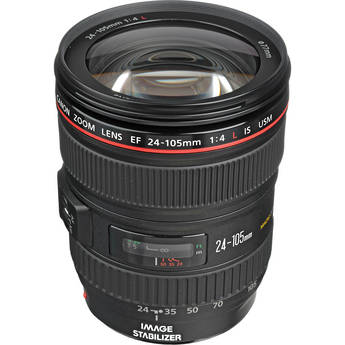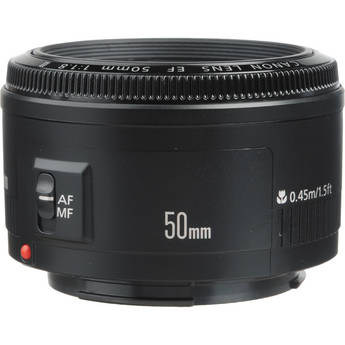There are a lot of lenses out there...a lot. How do you decide which to buy and what the heck the difference is?
Famed wildlife photographer and prolific podcast czar Scott Bourne always says that photography is about compromise. Nowhere is this more evident than when dealing with lenses.
THE perfect lens, doesn't exist but YOUR perfect lens might.
(Scott Bourne also says that 99% of lenses are better than 99% of photographers but I digress.)
Lenses for Digital SLRs range from about $100 all the way up into the thousands of dollars. For the most part you get what you pay for but there are options no matter what your budget.
The main goal of any lens is sharpness. You want to get a lens that will be sharp at the sizes that you are printing. The smaller you print, the less you need something ultra-sharp.
For quality, I would definitely choose a more expensive lens with a lower cost camera than vice-versa. Think about it. If you have a $7000 camera but put a $100 lens on it, your photos can only be as sharp as the lens is! The other advantage to investing in lenses is that they can move up as you upgrade to a better and better camera.
So let's dive in.
The factors that contribute to price are:
1. Build quality
2. Complexity
3. Size
4. Features
1. Build Quality.
Professional grade lenses (with Canon it's the ones with red lines around them) are built tougher. That doesn't necessarily mean durability, although that factors into it too, cheaper lenses are often made of plastic versus metals and other composites.
Mechanically, higher quality lenses have internal focus and internal zoom. When a piece moves in and out it is difficult to seal effectively so there's room for dust to invade the internal workings of your lens. The push and pull also tends to suck the dirt in. Internal movement means that all the physical movements are encased in the lens. It doesn't physically expand outwards either to zoom or to focus. It's more complex to build (That's number 2) so that makes it more expensive but it also allows for better sealing. If you often shoot in dusty or dirty environments you'll ruin less sturdy lenses by getting sand inside them. Even with normal wear and tear you'll most likely get dust in your lenses if they have external movement but that isn't necessarily a problem for casual users since it typically doesn't have a great effect on the quality of the photos you're taking.
The other factor of build quality is the simple quality of the glass used in the lenses. Here again, you can't really fake it--better is better.
See how the barrel moves out of the body.
Where this lens stays the same size regardless of the focus or zoom.
2. Complexity.
The more parts and engineering it takes to create a lens, the more expensive it will be. This is an area where you can REALLY get quality for a steal.
At the consumer level, you often see lenses with huge zoom ranges like 18-300. It's really handy to not have to switch lenses but mechanically, it's impossible to have the same quality with that kind of complexity. In the move from a wide angle like 18mm to a long telephoto like 300mm it is very difficult to control the refraction of light. You'll rarely see pro-quality lenses with those ranges because you simply can't maintain high quality throughout the length of the lens. There's more leeway in a zoom from 70-300 because it doesn't have to pull double duty as a wide-angle as well. So just know that with the convenience of a single lens comes a sacrifice in image quality. Which leads us to...primes.
This is where you can really leverage your money and get high-quality glass for a much lower cost.
A prime lens is a lens that doesn't zoom. It is a single focal-length--a common choice is 50mm. With no mechanics at all for zooming, you get a much simpler, cleaner lens with fewer elements driving the cost of design and manufacture down considerably. Many high-end photographers use nothing but primes because the light is so much more controlled and less diluted...and in a prime lens you can get much, much better lenses for so much less $$$! Most pro series zoom lenses run about $1000-$3000 while quality primes run $300-$800.
Even at the low end you'll get much better lenses for less money.
When I first started, I bought two $100 lenses, the Tamron 70-300mm f4-5.6 and the Canon 50mm 1.8 prime. Both were made of plastic.
I used the 70-300 zoom for about a month before I realized that the quality simply wasn't good enough while the 50mm never left my bag until a few months ago when I was shooting with it for fun and the camera was stolen. (I have missed it.) You simply can't make a 70-300 zoom with any quality for $100 but that prime was sharp as a tack! (I won't go in to f-stops now but you also get 4 times more light at the same shutter speed with the prime.)
3. Size
Size matters here too. The bigger the front opening, the more light that gets in at once. You'll see consumer lenses with diameters of 52-58mm. You can only get so much light in those at one time. As you get larger, (77mm is standard for most pro lenses), you get much more light but you also get much more expensive, larger pieces of glass. It also becomes far more expensive for filters.
Size doesn't have a large impact image quality, just cost.
4. Features
Features definitely affect image quality. Image Stabilization (Nikon calls it VR, Sigma-OS, etc.) is a very common feature these days and can be a huge help in controlling motion blur, especially in low light. IS basically uses a gyroscope and tiny motors to compensate for your shaky hands by moving the lens elements the opposite way of the shake. It helps.
Other features include:
- Lens Coatings: layers of stuff coating the lenses to control lens flare and that ugly purple, blue, and red fringing you get in high-contrast situations. Definitely affects the quality of your images. It's not fun to take out and higher-end lenses give you much less of it.
- Ultrasonic Focus Motors: Uses vibration to auto-focus instead of moving motors. Doesn't really affect image quality directly but quieter, faster, more efficient auto-focusing is definitely going to get you better photos, especially of moving subjects like children and athletes.
- Tilt-shifts: Lenses designed to change the plane of focus to compensate for perspective, usually used in architecture but also can be very creative and dynamic for portraits. For examples of tilt-shift in portraits check out Julie Parker. She's great.
- Auto-focus override: Typically used in sports, it allows you to manually move the focus and override what the camera chose without changing the focus mode to manual. It's quite complicated mechanically. Personally, I never use it but I'm sure it's indispensable for somebody.
So there you go. Hopefully this info will help you make an informed decision on what is really one of the biggest factors in Image Quality.
Next week's topic? Exposure.
May 6, 2010
Subscribe to:
Post Comments (Atom)
Want some tunes while you browse?
Post Topics
- "Why I Love Weddings"
- Art
- Artistic Soul
- Bands
- Black and White
- Cameras
- Ceremony
- Classic
- Destination Wedding
- Devereaux Mansion
- Downtown Salt Lake City
- Draper Temple
- Events
- Family
- Fine Art
- Football
- Funny
- Geek
- Great Photographers That Aren't Me
- Great Salt Lake
- Groom
- Hannah
- Heritage Gardens
- Holidays
- Humor
- Instruction
- Joseph Smith Memorial Building
- LDS
- Landscapes
- Leaves
- Manti Temple
- Memory Grove
- Milestone Images
- Military
- Nature
- Nightmare on 13th
- Nostalgia
- Ogden
- Park City
- Photo IQ
- Photography
- Portfolio
- Portraits
- Prague
- Quinceanera
- Real estate photography
- Reception
- Rice-Eccles Stadium
- Salt Flats
- Salt Lake City
- Salt Lake Temple
- Saltaire
- Senior
- St. George
- Teaching/Seminars
- The Point
- This is the Place
- Tips and Tricks
- Travel
- Underwater
- Union Station
- Utah
- Utah DJ Association
- Utah Portrait Photographer
- Utah Senior Photographer
- Utah Wedding Photographer
- Vintage
- Wedding
- What's My Wallpaper?
- Woodbury
- Woods On Ninth
- Zack Arias
- baby
- bridals
- children
- engagements
- film
- fun
- hollywood
- love
- night
- oregon
- philosophy
- slideshow
- sunset
- the Someday List
- valentines day
- video
Random Web-related Links
Jon Woodbury Photography blog directory
Jon Woodbury Photography is the choice for artistic, personal photography.
Visit Jon Woodbury Photography at OneWed.com & read a review of this wedding vendor & others.








Jon, I'm so glad your doing these! I thought I knew all I needed to know about lenses. Turns out I didn't :). When you talked about the actual quality of the glass it made me think of this article. The little video shows just how much work goes into making a single lens. http://i.gizmodo.com/5160891/giz-explains-why-lenses-are-the-real-key-to-stunning-photos
ReplyDeleteJanie Cope
That's a great article! Thanks!
ReplyDelete